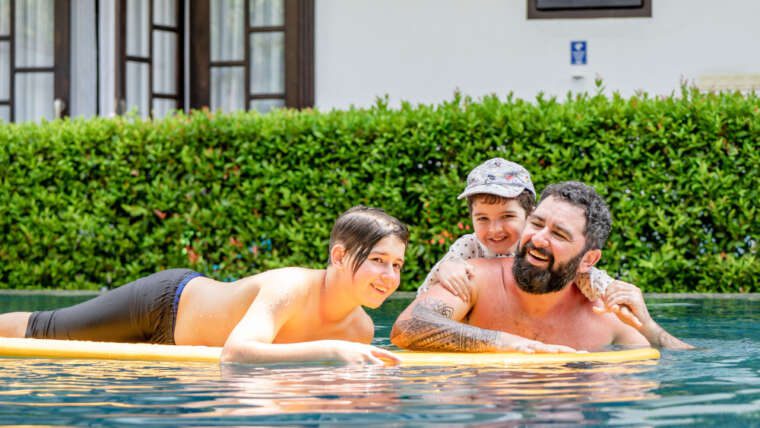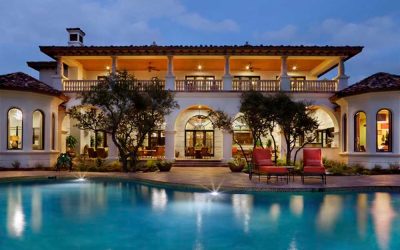Sitting in the backyard often wonder about a pool design to use? Wonder the value of seeking a professional? Further, wonder in the pool building process? Additionally, all pools cost differently; the larger, the more costly. So which pool bests fits all these needs? Let’s Dive into this and see where it takes us!
PROFESSIONAL HELP
Building a pool in the backyard is fun and a reward. But building a pool needs the right pool installer. The pool installer does the job correctly. Here are some things to look for in professional pool installers:
– The installer has experience installing pools. Make sure they have plenty of experience so you can be confident they’ll do a good job.
– Licensed and insured? Necessary in case something goes wrong during the installation process.
– Do other customers say good about them? Check online reviews to understand what others think about their work.
– How much will the charge be? Get quotes from several pool installers to compare prices.
Find a pool installer that meets all the above criteria, and the pool install will be correct and at a fair price.
5 THINGS BEFORE TAKING THE PLUNGE
- Choose the right location: The first step is finding the perfect pool spot. Make sure to consider factors like sun exposure, privacy, and proximity to the house.
- Get the necessary permits: Find the perfect location, and ensure all the necessary permits before starting construction.
- excavate the site: Done with heavy machinery, and essential to get it right, so the pool is level and stable.
- install the pool: The fun part! Once excavated, the installer will install the pool according to the chosen design.
- Finishing touches: The final step is to add all the finishing touches, like decking, landscaping, and lighting. Making the pool truly unique and enjoyable to use.
COSTS INVOLVED IN BUILDING A POOL
First, excavate the area by hand or with the help of a machine. Excavating will add to the cost depending on the pool size and terrain. Next, fill it with water and put the liner on top. The cost of the liner will again depend on the size of the pool. Finally, add final touches like decking, lighting, and landscaping. Again, the costs can vary widely, so it’s best to consult a professional before deciding.
- In-ground Concrete Pool: $20,000 – $40,000
- Above-ground Pool: $3,000 – $10,000
- In-ground Fiberglass Pool: $15,000 – $35,000
- Inground Gunite Pool: $25,000 – $75,000
- Portable Spa: $500 – $5,000
THE POOL SIZE AND TERRAIN
The size of the pool and the terrain around it can significantly impact the cost. Here are things to factor in that will affect the bottom line.
Pool size: A larger pool will require more water, which means high utility bills. Additionally, a bigger pool will need more chemicals and maintenance, adding to the costs.
Terrain: Additional support and drainage will likely be needed if the pool is on a slope. Additionally, pools in a location with extreme weather conditions require special features to protect against damage, which can also drive up costs. So, when considering how pool size and terrain impact cost, remember that a larger pool and rugged terrain add to the cost.
POOL TYPES
There are several types of pools, including above-ground, inground, and infinity pools; each differs.
ABOVE-GROUND POOL
An above-ground swimming pool is built above the ground, typically on a raised platform. Above-ground pools are typically less expensive than in-ground pools and easier to install. However, they may require upkeep and not last as long as an in-ground pool.
INGROUND POOL
Inground pools have permanent structures that require a significant investment but offer a luxurious look and feel.
INFINITY POOL
A swimming pool that doesn’t have a visible boundary is defined as an infinity pool. Water flows over the pool’s edge and creates a visual effect that stuns. Infinity pools are found in luxury hotels and resorts and can be in private homes.
Infinity pools’ typical construction is concrete or fiberglass. The pool’s pump system circulates the water to flow over the edge and back into the pool.
SHAPE & DESIGN
Each has a unique shape and size with all sorts of different pools. Many pools are long and skinny, while others are short and squat. Pools are round, while others are oval-shaped. In addition, there’s a vast range in size, from small plunge pools to massive Olympic-sized swimming pools.
So what’s the right shape and size? Well, that depends on a few factors. First, how is the pool in use? For example, If the pool is going to be for taking a dip on a hot day, then a smaller pool might be OK. But if you want serious laps, look for a long and narrow pool.
Second, consider a budget. Larger pools will cost more to build and maintain, so if on a tight budget, scale back plans.
Finally, pool shapes and sizes will be more challenging to fit into specific spaces than others. So take a good look at the property and see what would work best.
CONCLUSION
Plan and know what is wanted to save time and money. Also, know the terrain and the permits to make the job smooth. Please take this information and use it to decide to install a pool in the backyard. Do the research and ask questions. Feel free to reach out to us.




